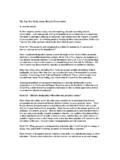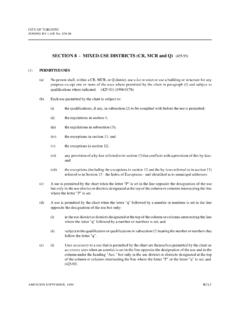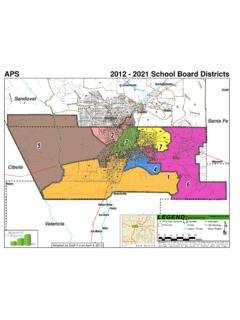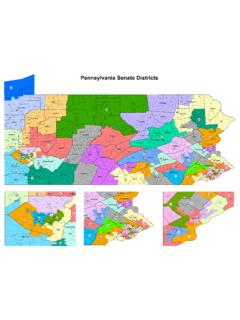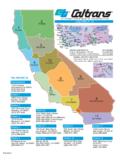Transcription of Wilshire Historic Districts, Planning Districts and Multi ...
1 WWilshireHistoric Districts , Planning Districts and Multi -Property Resources 01/26/15 Page 939 of 1035 Name: Berendo Junior High School Description: Berendo Junior High School is located at 1157 South Berendo Street in the Koreatown area of central Los Angeles. Sited on a rectangular, roughly 18-acre parcel, it is bounded by West 11th Street, West 12th Street, South Berendo Street and South Kenmore Avenue. The campus today consists of roughly 15 buildings; however, the original campus is composed of six buildings at the corner of South Berendo Street and West 12th Street. Of the six buildings on the original campus, four (the administrative building, auditorium, cafeteria, and gymnasium) were constructed in the Streamline Moderne style as part of Los Angeles Unified School district rebuilding efforts after the 1933 Long Beach earthquake.
2 The campus was extended by two and a half blocks westward to include larger play areas, parking lots and classroom buildings, beginning in the 1950s and continuing through the 1980s. Significance: Berendo Junior High School is significant as an excellent example of an LAUSD junior high school campus that was built in response to the substantial damage school campuses incurred during the 1933 Long Beach earthquake. The school s location was originally occupied by the Pico Heights School, built in 1896 to serve the area s rapidly growing population. Shortly after its construction, the school burned down. It was rebuilt in 1911 as Berendo Street Elementary School; its name was changed circa 1915 to Berendo Intermediate School, and then to Berendo Junior High School circa 1922. The school is now referred to as Berendo Middle School.
3 In 1933, the Long Beach earthquake severely damaged most of the school s buildings. One 1923 classroom building survived, but it was demolished in 1954. Like most schools built prior to 1933, Berendo Junior High was provided funding to rebuild the campus out of reinforced concrete. An amount of $230,000 was provided to construct a new auditorium, cafeteria, administration building and physical education building; architects Edward Cray Taylor and Ellis Wing Taylor designed the new buildings in the Streamline Moderne style. While the cafeteria and auditorium are one story in height, the administration and physical education buildings are two stories. The administration, cafeteria and auditorium buildings are connected by covered walkways. Beginning in the 1950s, the school s campus was enlarged, and new buildings were constructed.
4 In 1954, an addition was erected at the north end of the administration building, along South Berendo Street; a classroom building from 1923 was demolished to make way for the addition. From the mid 1950s through the 1980s, the campus was extended westward by two and a half blocks to include a larger playground, parking lots and additional classroom buildings. With the exception of the addition to the administration building, the post-1933 buildings are largely intact, with little to no alterations. The period of significance for Berendo Junior High School begins in 1936, when the school obtained funding for its rebuilding program, and ends in 1937, when the post-1933 campus was complete. WWilshireHistoric Districts , Planning Districts and Multi -Property Resources 01/26/15 Page 940 of 1035 Context 1: Context: Public and Private Institutional Development, 1850-1980 Sub context: Education, 1876-1980 Theme: Public Schools and the LAUSD, 1876-1980 Sub theme: Post-1933 Long Beach Earthquake, 1933-1945 Property type: Institutional - Education Property sub type: Middle School Criteria: A/1/1&C/3/3 Status code: 3S;3CS;5S3 Reason: Excellent example of an LAUSD elementary school representing the post-1933 Long Beach Earthquake period of school construction.
5 WWilshireHistoric Districts , Planning Districts and Multi -Property Resources 01/26/15 Page 941 of 1035 Name: Beverly-Fairfax Commercial Planning district Description: The Beverly-Fairfax Commercial Planning district is a two-block-long stretch along North Fairfax Avenue, a major north-south commercial corridor in the Beverly-Fairfax neighborhood of central Los Angeles. The district is located between Rosewood Avenue to the north and Beverly Boulevard to the south, in an area featuring a regular, rectilinear street grid. It is composed primarily of one-story retail storefronts, flush with the sidewalk, along both sides of the street; a few of the lots are used for parking.
6 Institutional buildings, including a Jewish temple and a senior center, are located in the district as well. Building features consist of large display windows and original projecting signage, including the Leader Building neon sign, Los Angeles Historic -Cultural Monument #667. Features of the district consist of original concrete sidewalks and palm trees planted in the 1980s. Shops are primarily accessed at their street-facing fa ades, with little or no parking at the rear. Common alterations consist of window and door replacements and storefront alterations. Significance: The Beverly-Fairfax Commercial Planning district is an early neighborhood commercial corridor in the Beverly-Fairfax area of central Los Angeles. Composed of retail storefronts primarily dating from the 1930s and the 1940s, the district is characterized by its pedestrian scale and orientation.
7 This district spans two tracts, both subdivided in 1923 as the commercial strip for adjacent residential neighborhoods east and west of Fairfax Avenue. Lots were 50 feet wide and backed by alleys. Although subdivided in the 1920s, this part of Fairfax Avenue was not paved until 1929, and substantial development did not begin until the 1930s, continuing through the 1950s. The residential neighborhoods surrounding the Beverly-Fairfax district to the east and west were associated with the Jewish community beginning in the late 1920s/early 1930s, and Fairfax Avenue emerged as a major Jewish commercial center after World War II. In the postwar years, kosher delis, restaurants, and Jewish bakeries were numerous on Fairfax Avenue. Several long-time businesses, including Canter s Delicatessen, Schwartz Bakery and Diamond Bakery, are still in operation.
8 Despite the commercial Planning district s significance, the area does not retain sufficient integrity or cohesion for Historic district eligibility. The majority of individual buildings have undergone some degree of alteration, and some were demolished to make way for newer, often larger buildings in the 1960s through the present. Revitalization efforts of this area in the 1980s provided building owners with new awnings and signage, and palm trees were planted. The cumulative effect of these alterations is an overall lack of integrity and cohesion for the district as a whole. However, the district does retain a strong sense of time and place. Its linear configuration, building massing, and low-scale pedestrian orientation contribute to an overall feeling of a 1930s-1940s commercial shopping street. For these reasons, this area may warrant special consideration for local Planning purposes.
9 WWilshireHistoric Districts , Planning Districts and Multi -Property Resources 01/26/15 Page 942 of 1035 Context 1: Context: Commercial Development, 1850-1980 Sub context: No Sub-context Theme: Commercial Identity, 1850-1980 Sub theme: No SubTheme Property type: Commercial Property sub type: Historic district Criteria: A/1/1 Status code: 6LQ Reason: The Beverly-Fairfax Commercial Planning district was historically the commercial center of the Jewish community that moved to this area from neighborhoods like Boyle Heights. While the commercial corridor retains many of its original Planning features and a distinctive sense of place, the majority of buildings within its boundaries have been either altered or replaced with more contemporary edifices.
10 Thus, the commercial corridor does not meet eligibility criteria as a Historic district , although it merits special consideration in the Planning process. WWilshireHistoric Districts , Planning Districts and Multi -Property Resources 01/26/15 Page 943 of 1035 Name: Clinton Manor Courtyard Apartment Description: Clinton Manor, a courtyard apartment located at 5124-5184 West Clinton Street, is located in the north section of the Wilshire CPA near the community of Windsor Square. The property occupies a acre site that spans multiple residential parcels. The property is composed of three two-story apartment buildings and one single-story apartment building, all of which are designed in the American Colonial Revival style.
